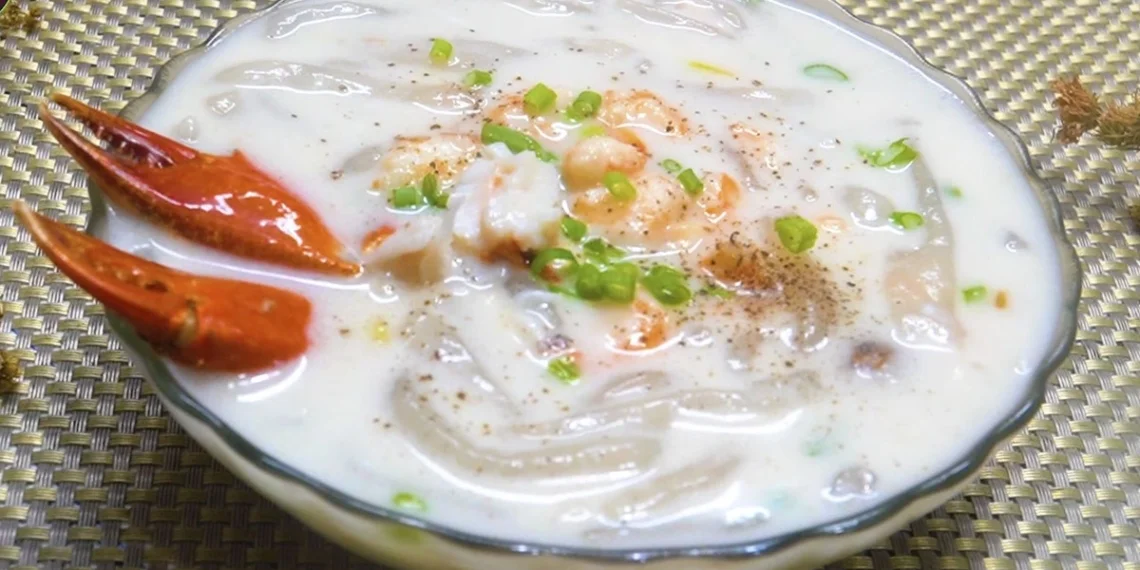Coconut crab noodle soup is a fragrant and rich water dish, “famous” in the fertile land of the Mekong Delta. Join TasteVN to “roll up your sleeves” get cooking today and learn 2 delicious and authentic ways to make coconut crab noodle soup for the whole family to enjoy!
1. Coconut crab noodle soup
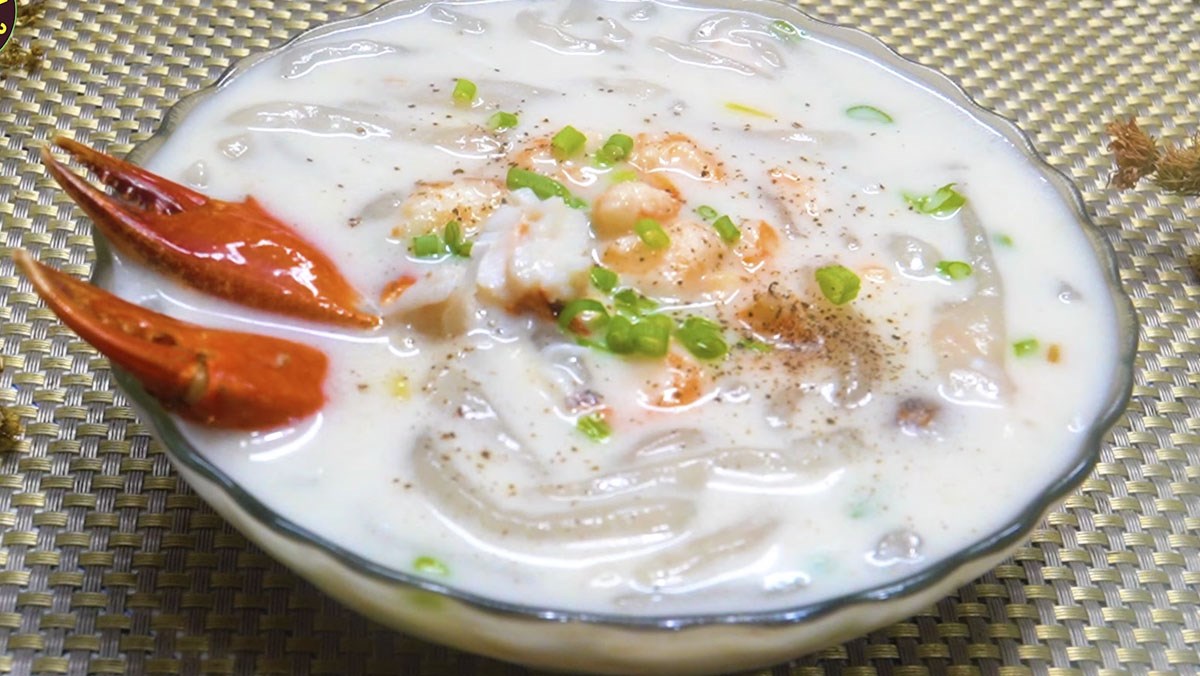
-
Preparation
15 minutes
-
Cooking
40 minutes
-
Difficulty
Medium
Ingredients for Coconut crab noodle soup Serves 4
Rice flour 100 gr Tapioca flour 200 gr Coconut milk 1.2 liters (400ml of type 1 coconut milk and 800ml of type 2 coconut milk) Prawns 250 gr Crab 600 gr Green onions 4 stalks Cooking oil 1 tablespoon Common seasoning a little (sugar/salt/pepper/seasoning powder) Fish sauce 2 tablespoons
How to choose fresh ingredients
How to choose fresh sea crabs that are not rotten
- Observe the silk skin in the joint area (elbow) of the sea crab claws; if the silk skin is light or dark pink, the crab will have more meat and will taste better when cooked.
- In addition, choose those with smooth and shiny claws, as they indicate a fat crab, while skinny crabs will have wrinkled claws.
- Gently squeeze the crab’s belly; a good crab will have a firm belly with a certain degree of hardness.
- Do not buy crabs that move little and appear sluggish; these crabs are about to die, and their meat will not be firm and sweet.
- For this dish, you can buy pre-picked crab meat or buy live crabs to process as mentioned in the article!
See details: How to choose fresh sea crabs
How to choose delicious shrimp
- Fresh and delicious shrimp will have transparent legs that are tightly attached to the shrimp body. Do not buy shrimp with discolored, loose legs.
- Pay attention to buy shrimp with slightly curved bodies, firm meat, intact shells, and heads tightly attached to the body.
- Do not buy shrimp with splayed, loose tails, missing fins, and not neatly folded together. They may have been caught for a long time or soaked in preservatives.
See details: How to choose fresh shrimp
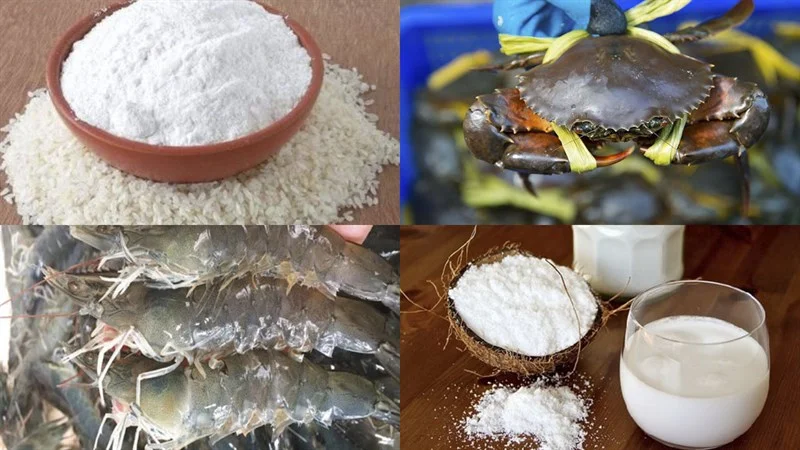
How to prepare Crab Cake with Coconut Milk
-
Preparation of ingredients
To anesthetize and paralyze the crabs, after purchasing, soak them in ice water for 10 minutes. Next, use a brush to scrub away the mud and sand on each part of the crab, then wash the crabs thoroughly with water and let them drain.
Place a pot of water on the stove to boil, add the crabs and boil until the water returns to a boil, then remove the crabs, let them cool, and separate the meat.
How to properly prepare crabs:
- Ideally, you should use a sharp object to poke the crab’s belly (destroy the spinal cord) so that the crab does not move before removing the string.
- Additionally, you can place the crabs (still tied) into ice water to numb their limbs before proceeding with the preparation.
- After bringing the crabs home, if you don’t have time to prepare them, you should keep them in a cool place where you can easily splash water on them to prevent them from “dying of thirst.”
- However, do not place the crabs in water immediately after buying, as this can cause them to die from “thermal shock.” Do not allow the crabs to die before preparation, as this can affect the quality of the crab meat.
See details: How to properly, quickly, and simply prepare crabs
Shrimp should be peeled, heads removed, then gently squeeze the shrimp’s body with your hand to expose the shrimp’s thread slightly before pulling it out. After that, wash the shrimp and let them drain.
Quick and proper way to remove shrimp threads:
- Count backwards from the shrimp’s tail to the second groove connecting the two shell segments, insert a toothpick through this spot and gently pull the black thread out.
- You don’t need a knife to cut the shrimp’s back; you can also use a toothpick to dig out the head part of the shrimp’s body to find the black thread. Gently pull this black thread out, and the shrimp is clean.
Green onions washed clean. Crush the tops of the green onions and then chop them finely. Chop the green leaves separately.
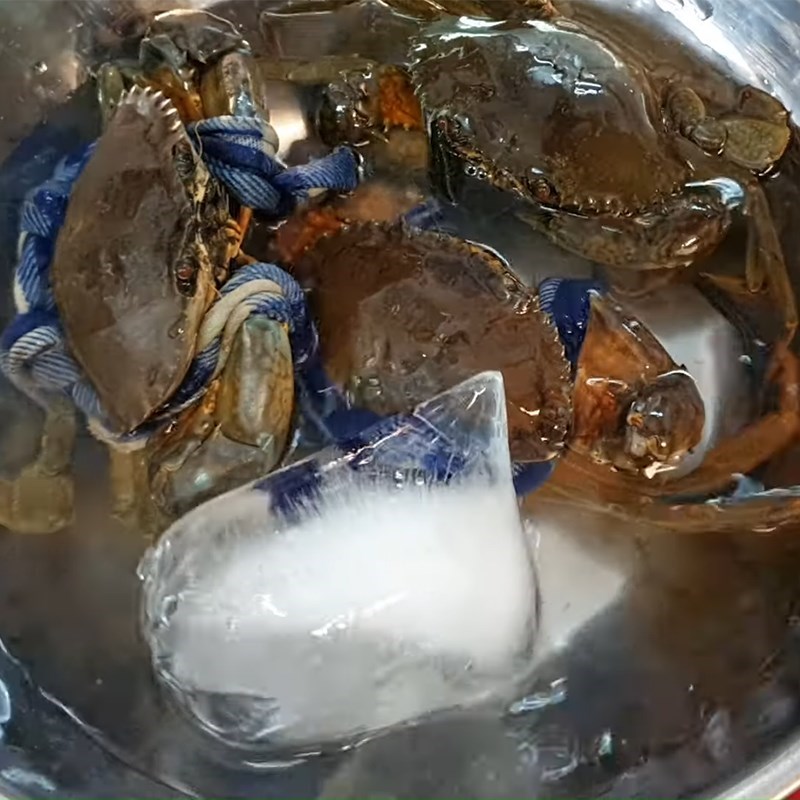
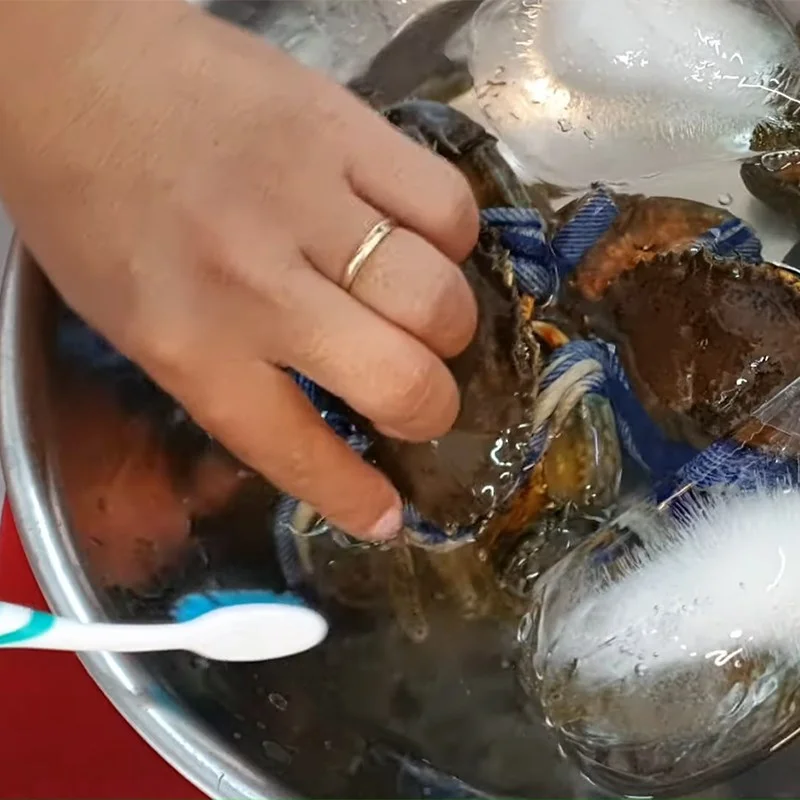
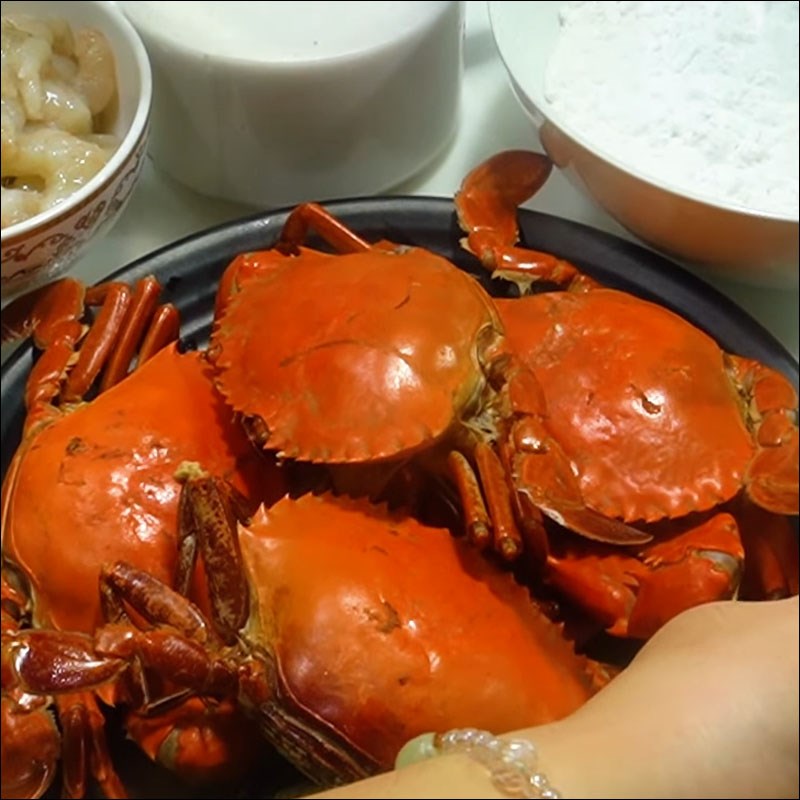
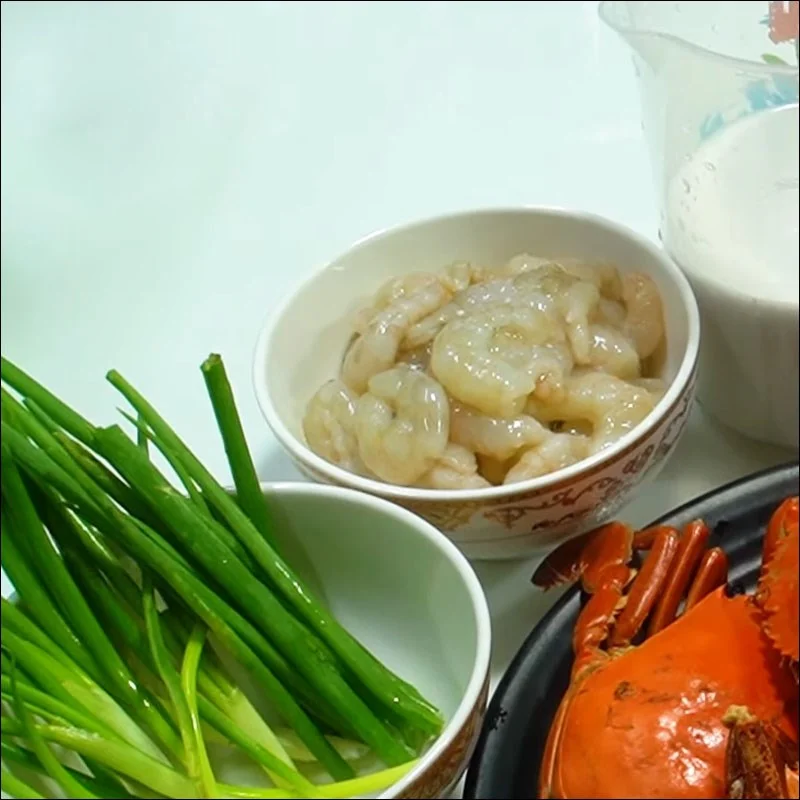
-
Mixing and kneading the dough
Put 100g of rice flour and 200g of tapioca flour into a bowl, then gradually pour in boiling water while stirring with a whisk until the mixture is smooth and can be formed into a non-sticky ball, then stop.
Tip:
- For tapioca flour, you should mix the flour with hot or boiling water (70 – 80 degrees Celsius) so that the dough becomes smooth and not sticky.
- Depending on the type of flour (old or new), you can adjust the amount of water so that the dough is soft and smooth.
Transfer the mixed dough onto a cutting board or a clean flat surface, and knead it evenly for about 5 minutes until the dough is really smooth and soft.
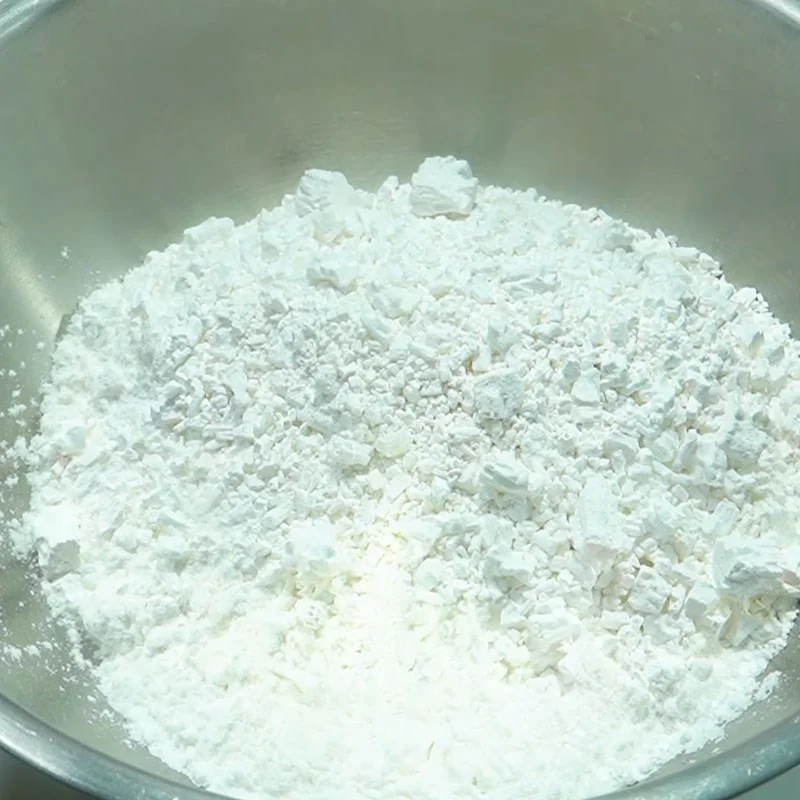
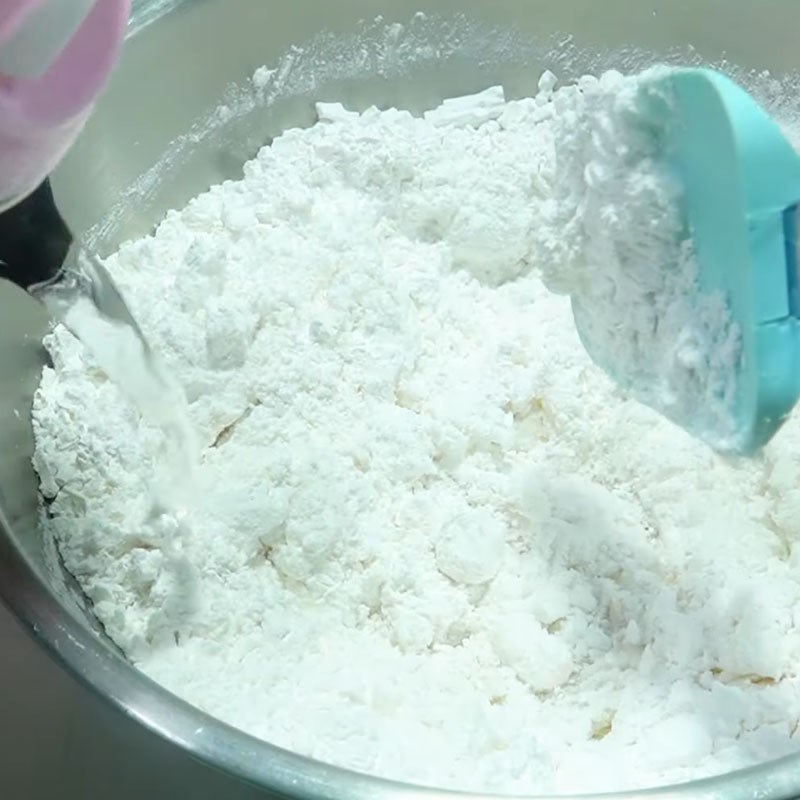
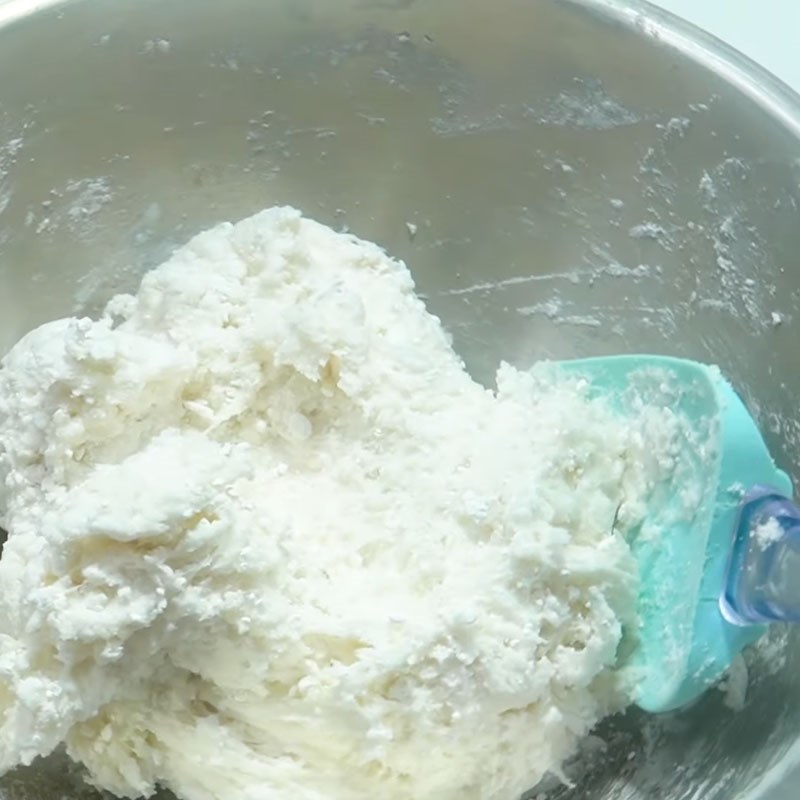
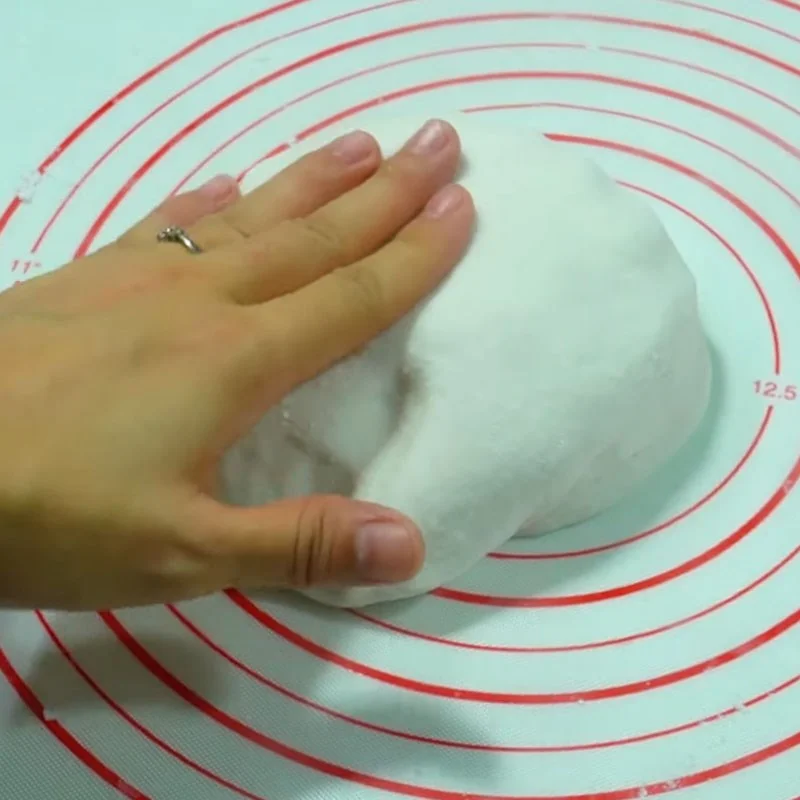
-
Cut and blanch the noodles
Next, use a rolling pin to flatten the dough into pieces about 1/4 of a small finger thick. Use a knife to cut into small strands suitable for eating, then sprinkle a little tapioca flour on top and mix well.
Tip: Sprinkling a little tapioca flour on the noodles after cutting helps prevent them from sticking together.
Bring a pot of water to a boil, then add the noodles and cook on high heat until the noodles float to the surface and the water boils again, then remove and place the noodles in a bowl of cold water.
Tip:
- You should wait for the water to be really boiling before adding the noodles to avoid them breaking apart and sticking together if added when the water is still cold.
- After boiling, you should put the noodles in a bowl of cold water to keep them clear and prevent sticking.
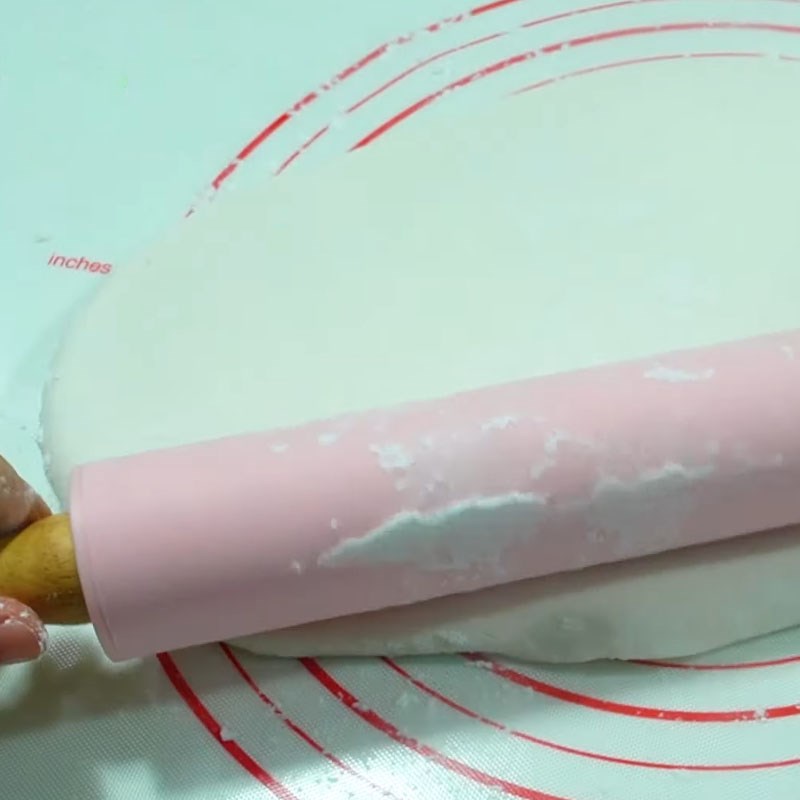
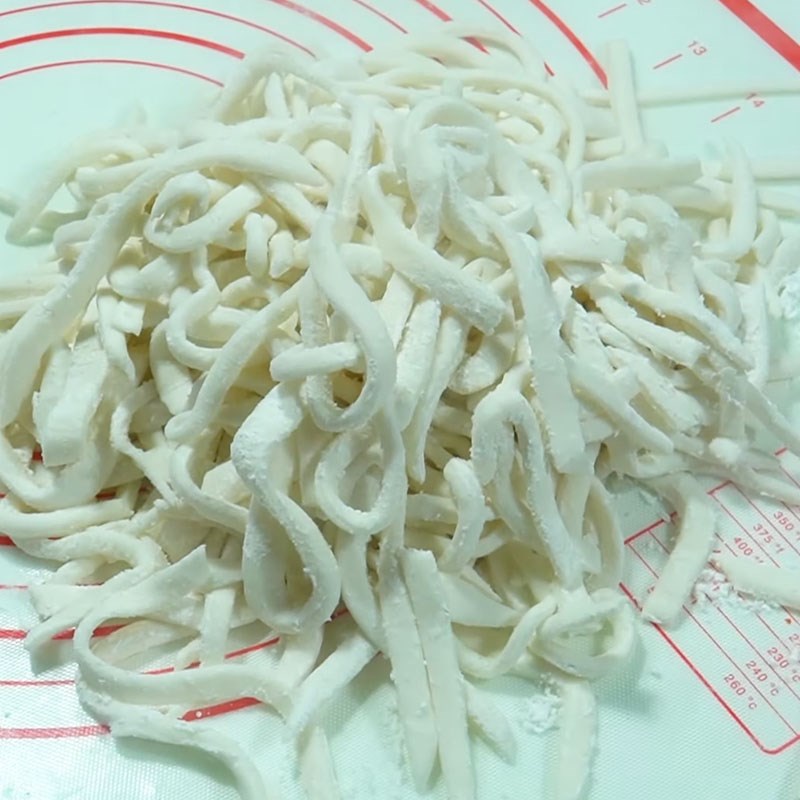
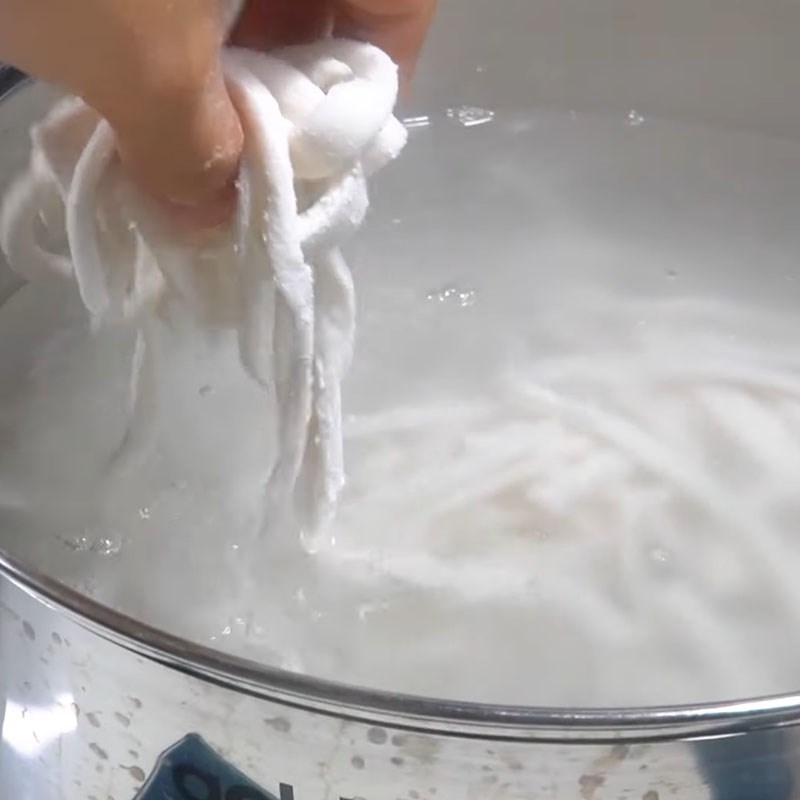
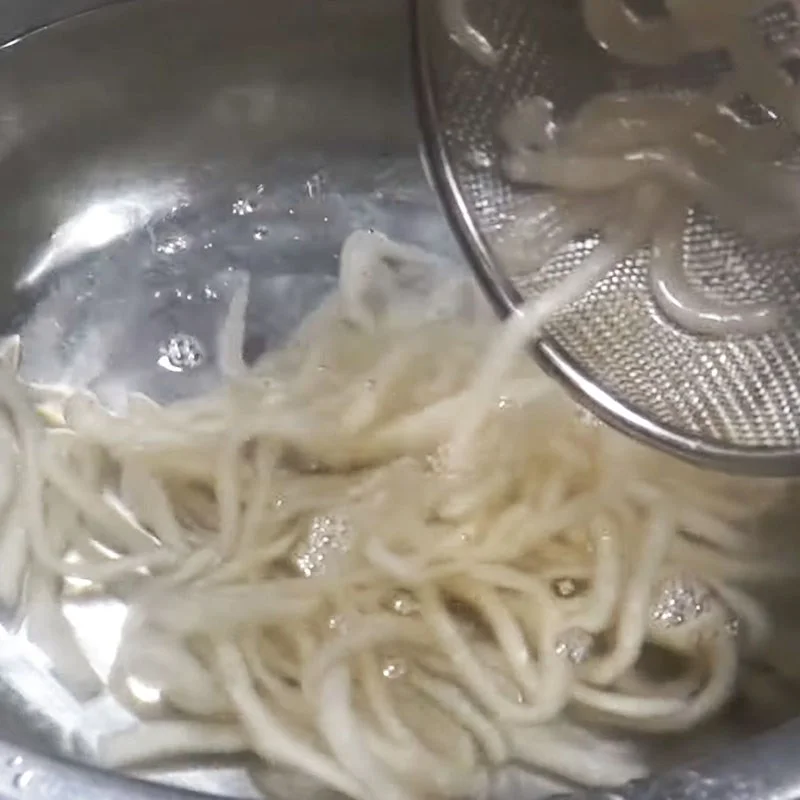
-
Sautéing shrimp and crab
Place a pan on the stove, add 1 tablespoon of cooking oil and heat it, then add the chopped green onions and sauté until fragrant.
When the onions are aromatic, add the shrimp meat and sauté over medium heat until the shrimp is cooked and firm, then add the crab meat.
Next, add 1 tablespoon of sugar, 1/2 tablespoon of seasoning, and 1 teaspoon of salt to the pan, then continue to sauté until the ingredients are cooked and evenly soaked in seasonings, then turn off the heat and sprinkle some ground pepper on top.
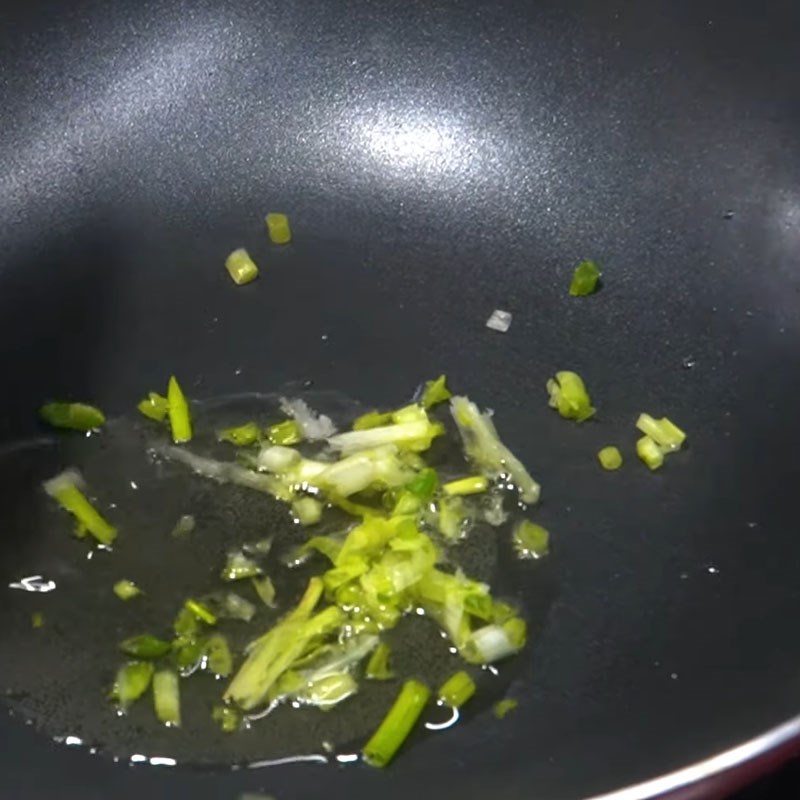
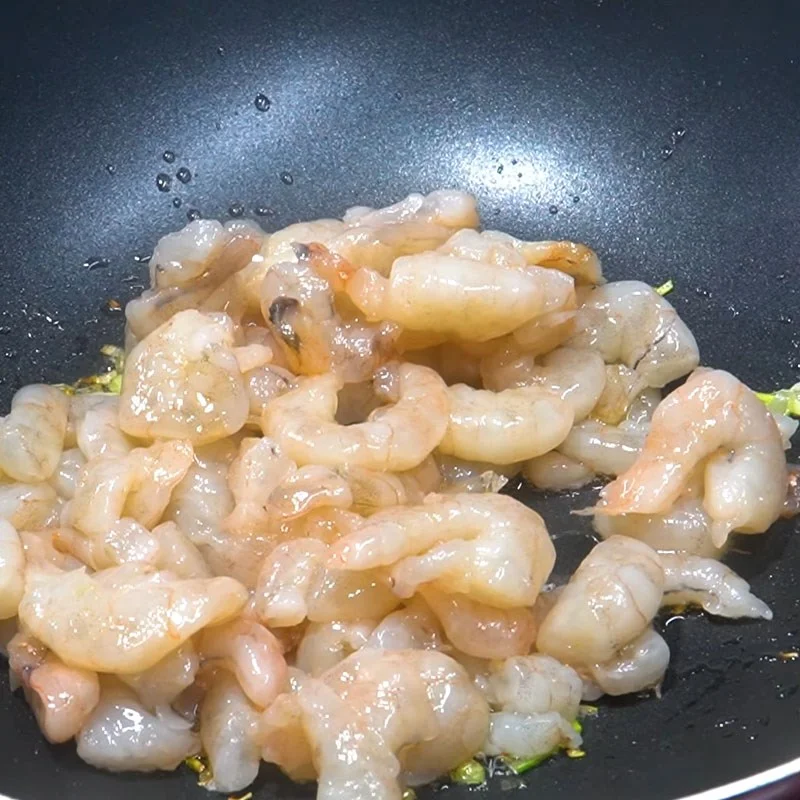
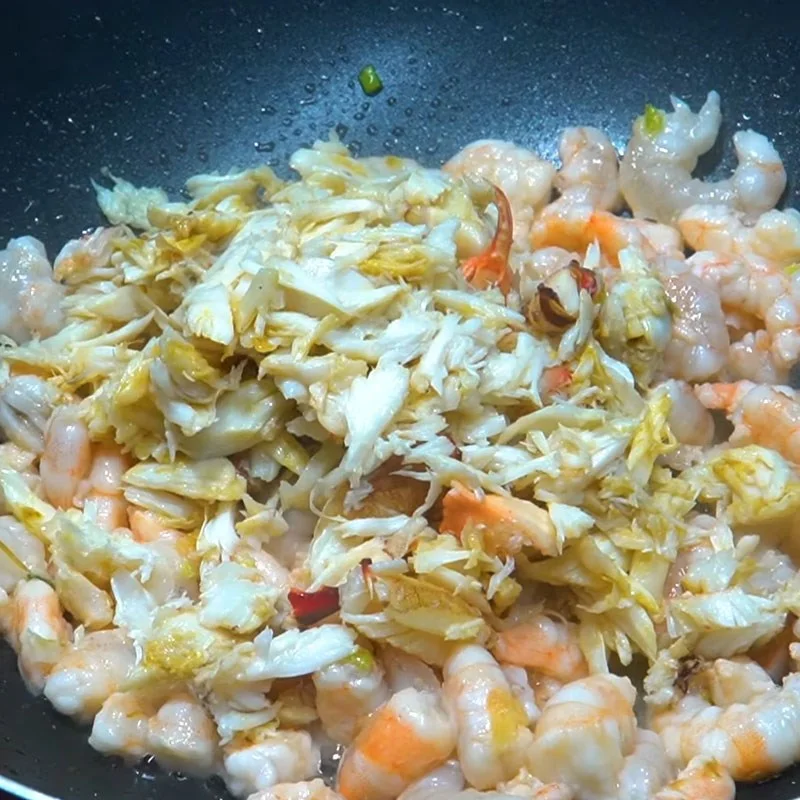
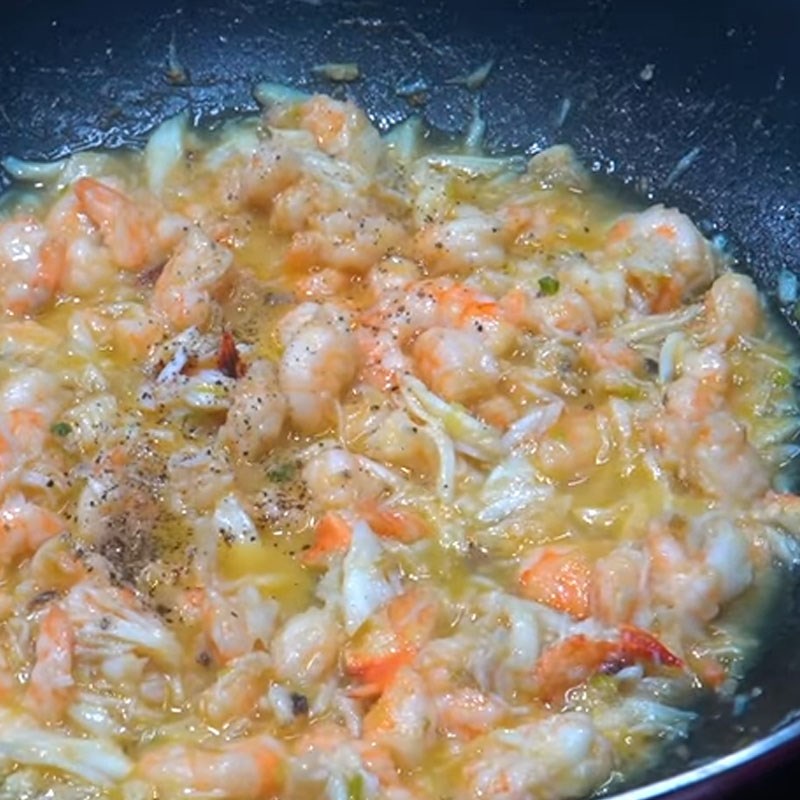
-
Cooking crab noodle soup
Place a pot on the stove, add 800ml of type 2 coconut milk (the second extraction of coconut milk) and 800ml of filtered water and bring to a boil, then add the noodle soup into the pot and continue to cook until the water is gently boiling.
Next, add the crab meat and shrimp that were set aside into the pot, wait for the water to boil again, then add 400ml of type 1 coconut milk (the first extraction of coconut milk).
Add 1.5 tablespoons of sugar, 1 tablespoon of seasoning, 1/2 tablespoon of salt, 2 tablespoons of fish sauce, then stir well and wait for the pot of noodle soup to boil vigorously again, then taste and adjust the seasoning to your liking before turning off the heat.
Finally, add finely chopped green onions, scoop into bowls, and decorate for an appealing presentation to complete the dish.
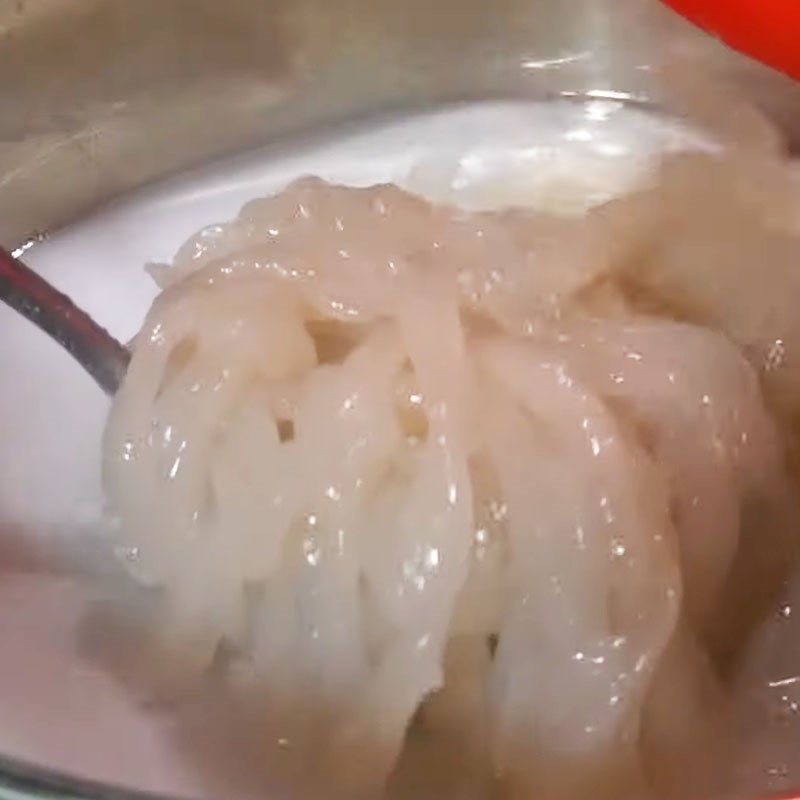
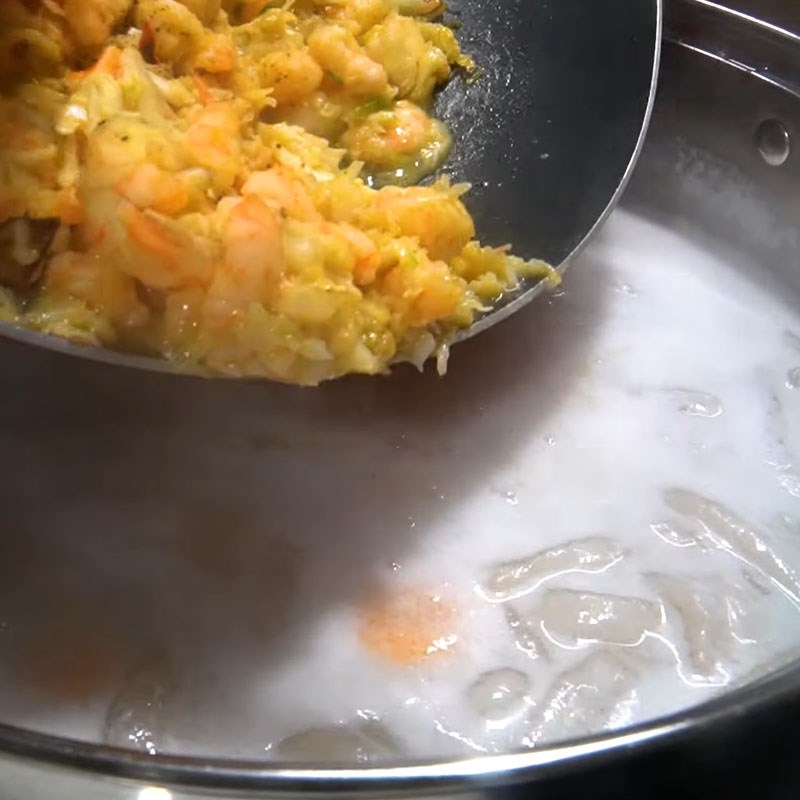
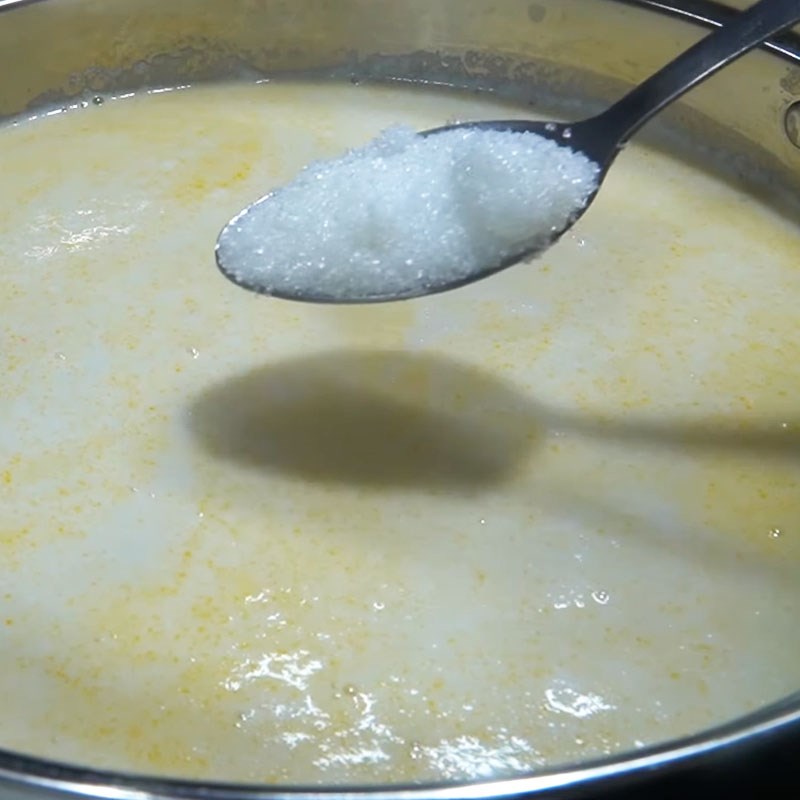
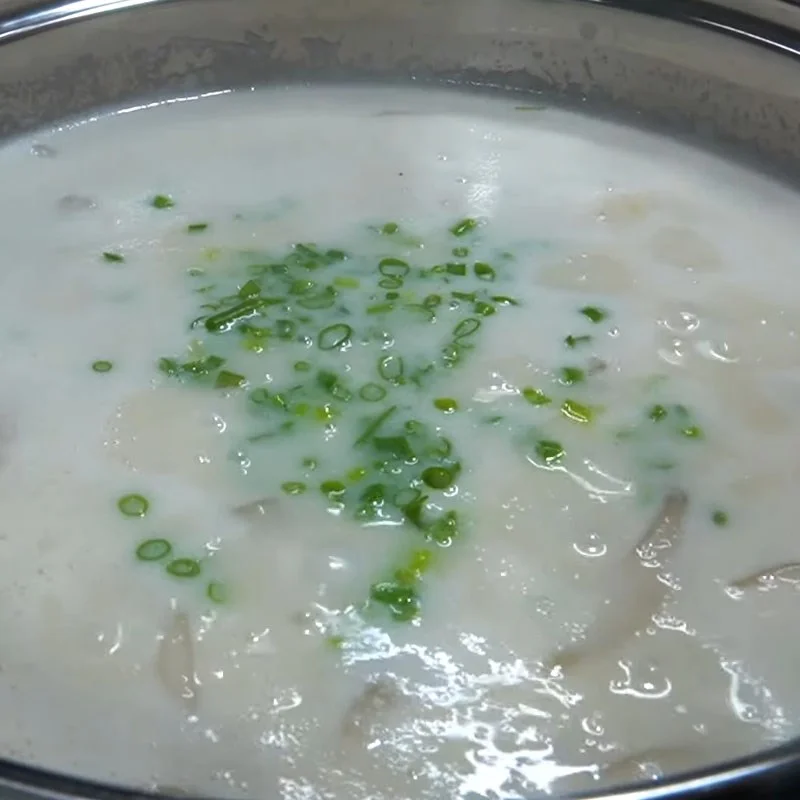
-
Final Product
So we have successfully completed the eye-catching, delicious, and attractive coconut crab noodle dish! The rice noodles are chewy, soaked in rich and creamy broth, with sweet and crunchy crab and shrimp, all blended together to create a dish full of flavor.
This dish can be enjoyed for breakfast or as a delightful alternative on days when you’re “tired” of rice!
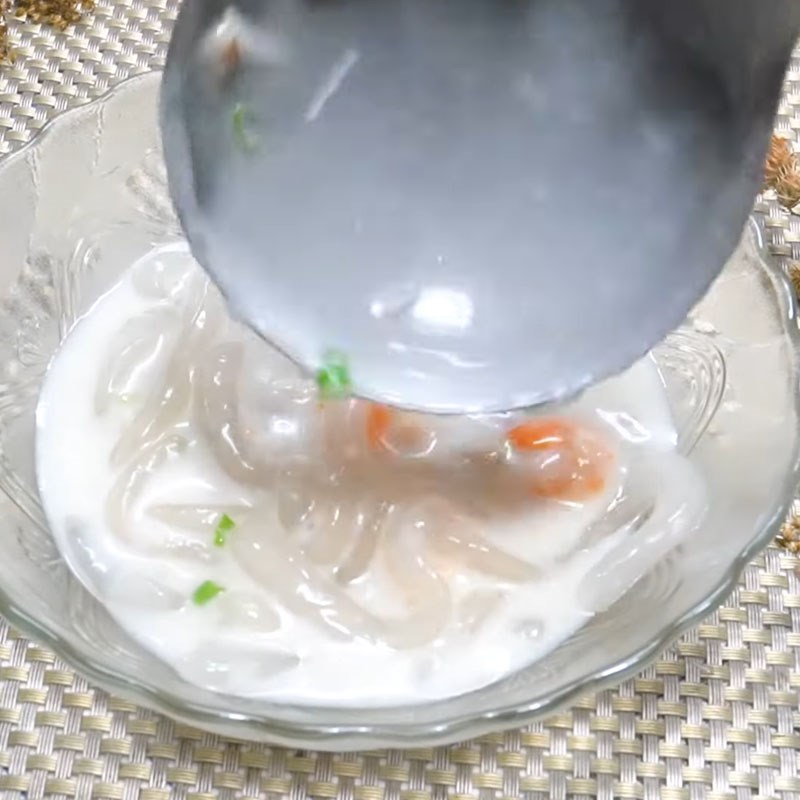
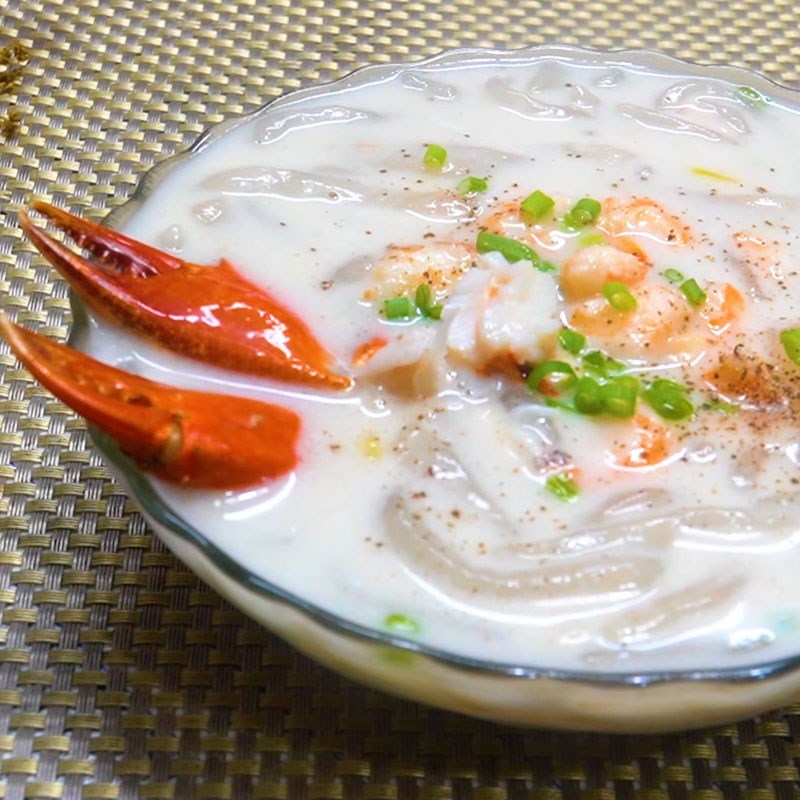
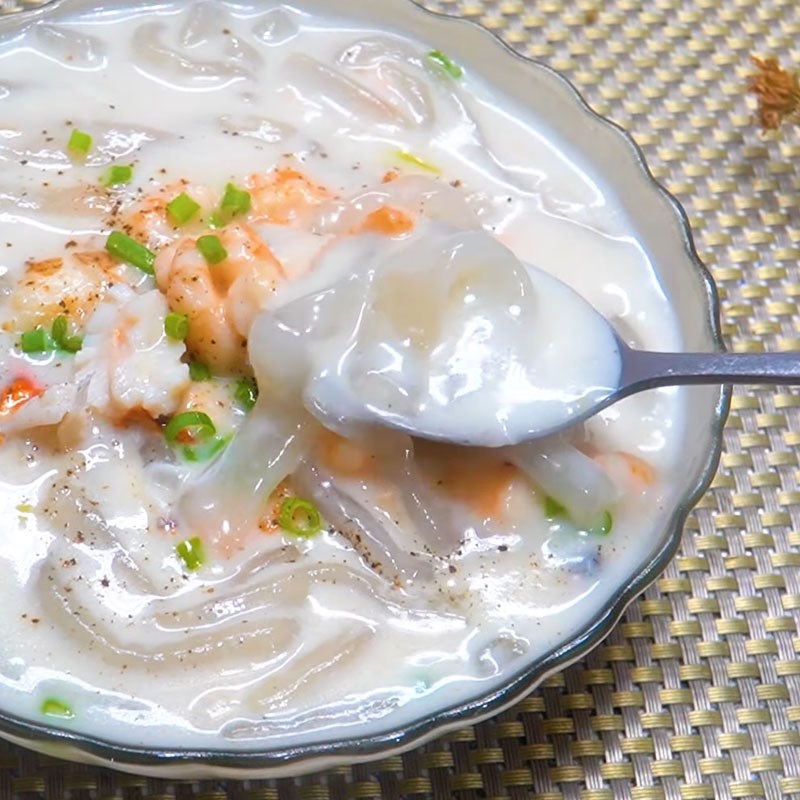
2. Coconut Crab Noodle
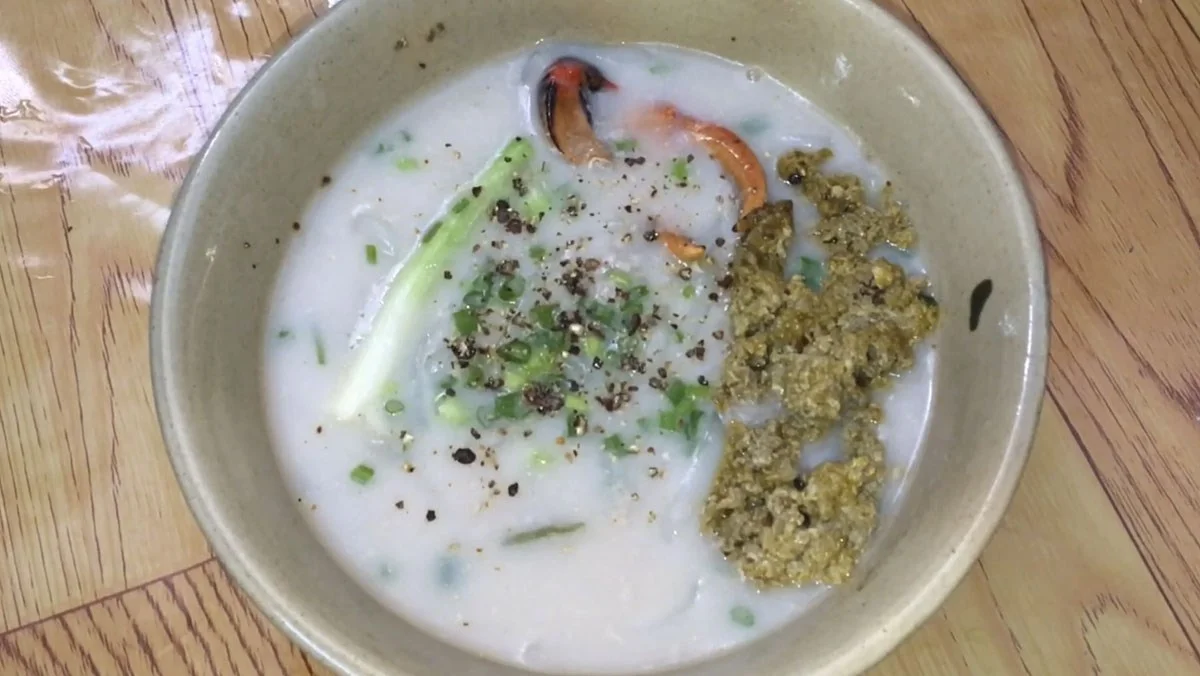
-
Preparation
15 minutes
-
Cooking
40 minutes
-
Difficulty
Medium
Ingredients for Coconut Crab Noodle Serves 4
Rice noodles 600 gr Ground crab 500 gr Crab roe A little Green onion 4 stalks (chopped) Shallots 2 bulbs (minced) Coconut milk 400 ml (250ml type 1/ 150ml type 2) Common spices A little (sugar/salt/pepper/MSG/seasoning) Cooking oil 1 tablespoon
How to choose fresh and delicious river crabs
- You can use pre-ground river crabs available at reputable markets and supermarkets; when purchasing, be sure to ask for some crab roe to enhance the dish’s flavor. Additionally, you can buy live crabs to grind at home or use a blender.
- For live river crabs, choose those with a dull gray-purple color and a lighter shell. To select crabs with more meat, pick male crabs with a small and pointed abdomen; for those with more roe, choose female crabs with a larger abdomen, commonly referred to as “flower abdomen.”
- Select crabs that are still moving quickly, with intact claws and legs. Pressing on the abdomen shell and seeing air bubbles indicates the crab is still fresh.
- Avoid choosing river crabs with red eyes, a hairy underside, or a back shell with star-like spots.
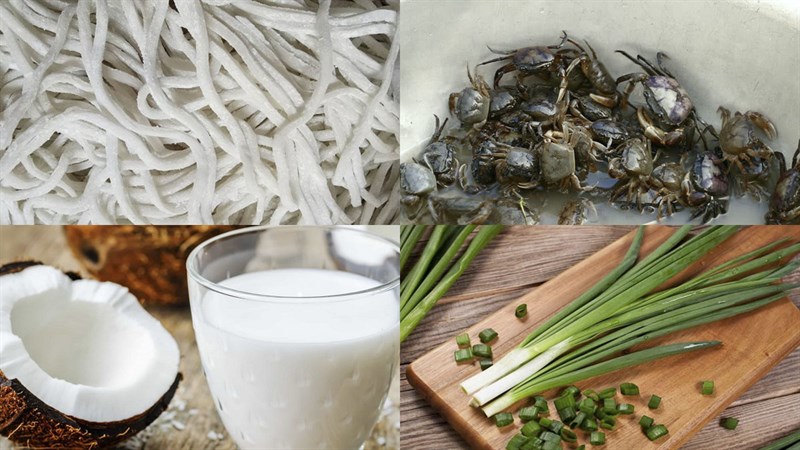
How to prepare Crab noodle soup with coconut milk
-
Making crab roe
Add 500g of pre-ground river crab meat to a pot, then mix it with 1.2 liters of filtered water. Add 1 teaspoon of salt and 1/2 teaspoon of monosodium glutamate to the pot.
Place the pot on the stove and cook on medium heat until the water boils, and the crab roe is cooked and floats to the surface. Use a sieve to gently remove the crab roe into a bowl, and set it aside.
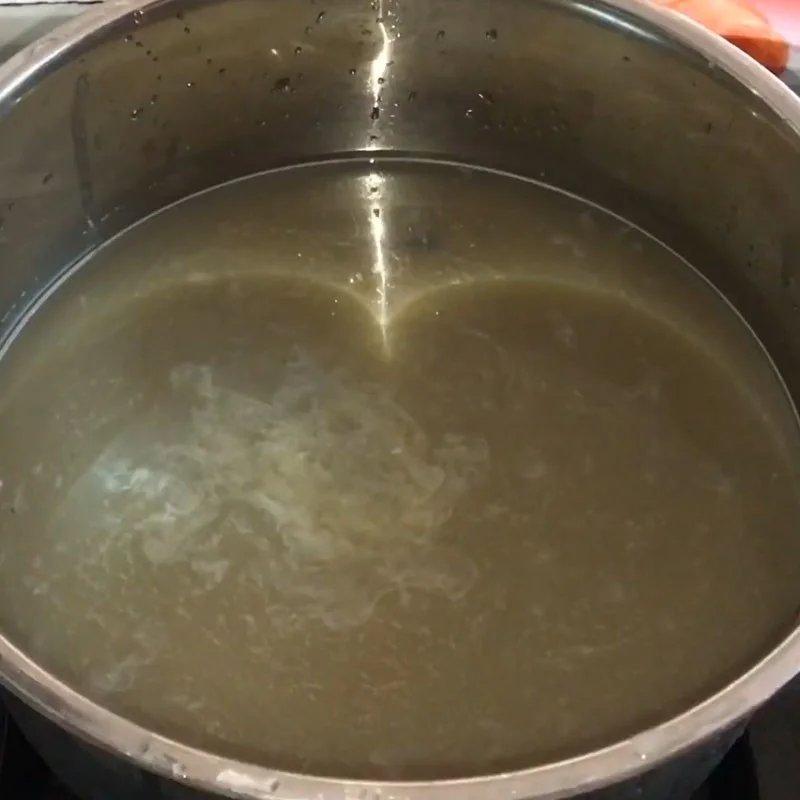

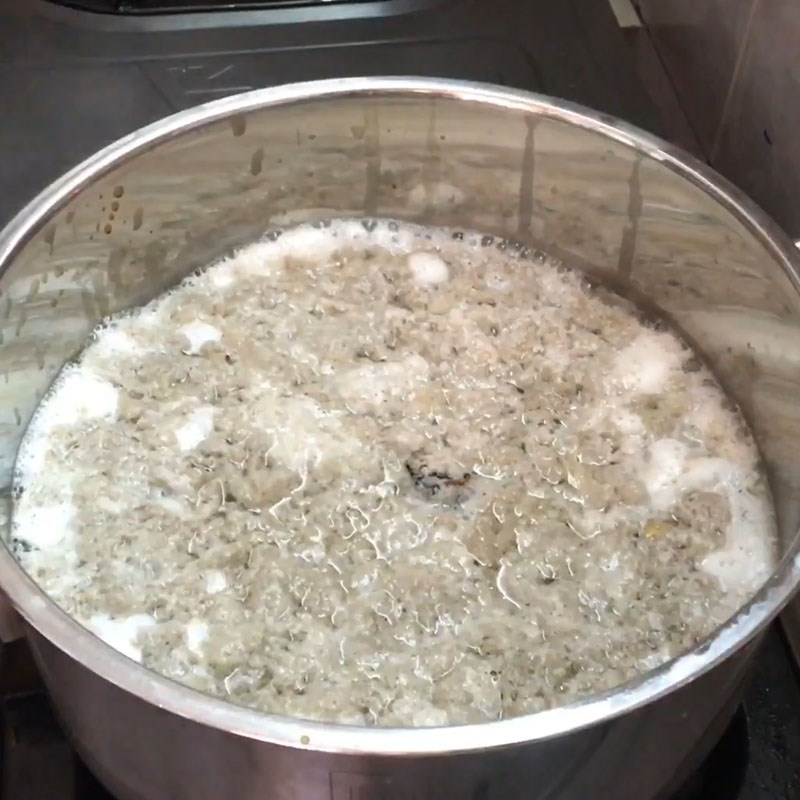
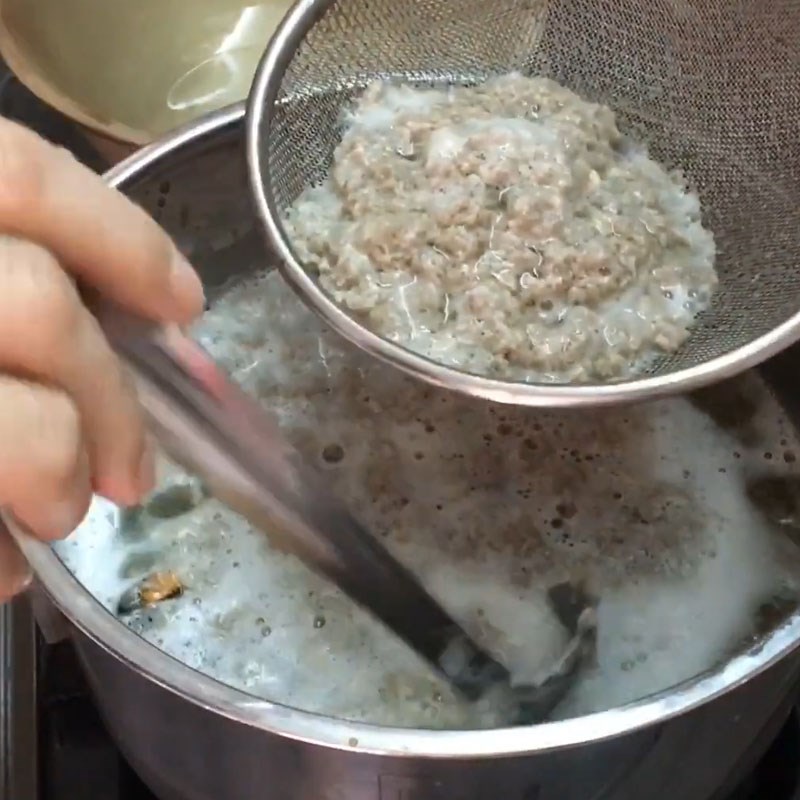
-
Stir-frying crab meat and crab soup
Place a pan on the stove, add 1 tablespoon of cooking oil and heat it up, then add minced shallots and sauté until fragrant.
When the shallots are aromatic, add the crab meat and stir-fry over medium heat until the meat is cooked, thickened, and reduced.
Add 1 teaspoon of seasoning and 1/2 teaspoon of sugar to the crab meat, then continue to stir evenly for another 2 minutes until the crab meat is boiling and absorbs the seasoning.
Next, pour all the crab soup and a little ground pepper into the pan to stir-fry with the crab meat. Stir well until the crab meat and soup are slightly dry and can be pressed into a block, then turn off the heat.

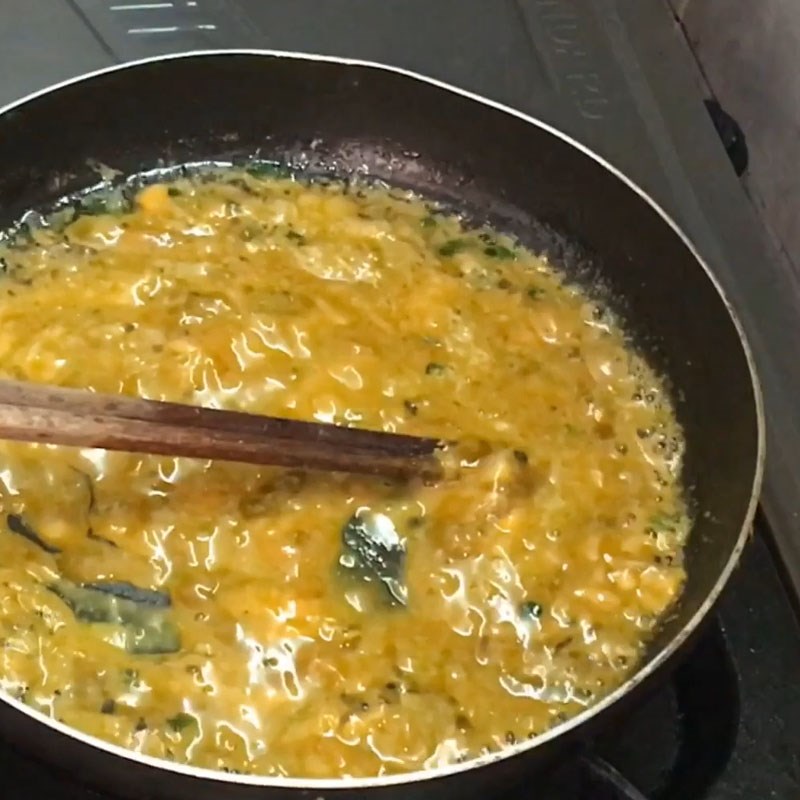
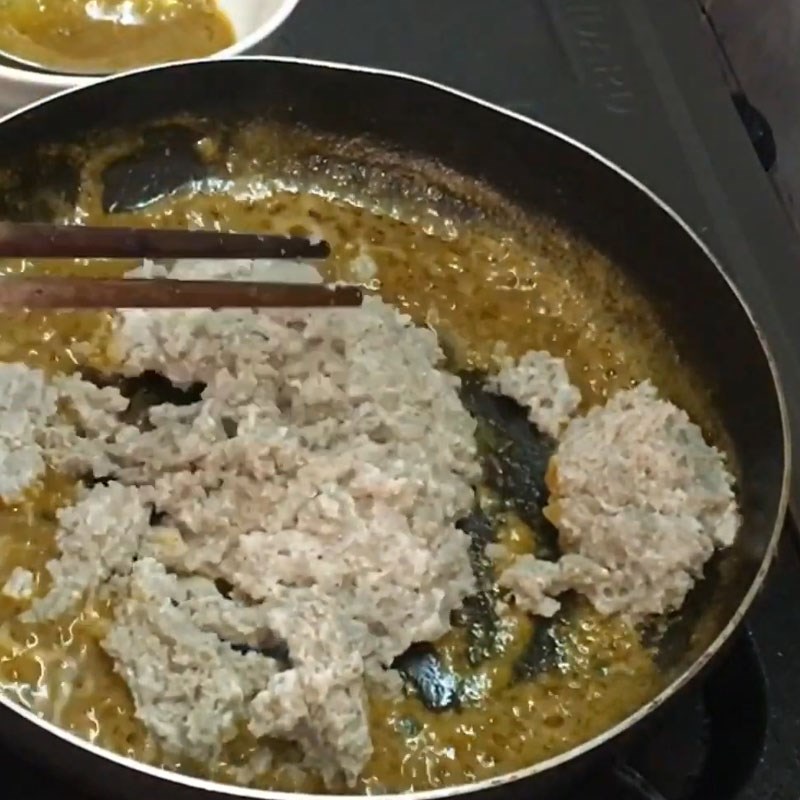
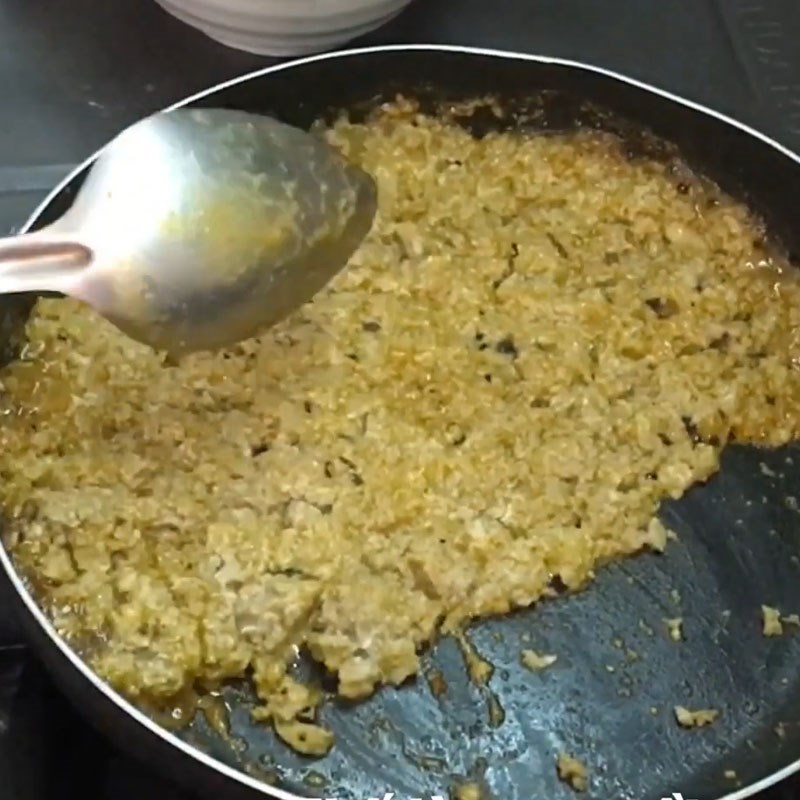
-
Cooking the broth
Add 150ml of type 2 coconut milk (thin coconut milk) into the pot with the crab algae cooking water from earlier and continue to cook over medium heat until the water is gently boiling. Add 1 teaspoon of seasoning, 1/2 teaspoon of sugar, and stir well.
Pour the rice flour noodles into the pot and cook over medium heat until the water boils, and the noodles are cooked and float to the surface.
Next, add 250ml of type 1 coconut milk into the pot and bring the broth to a boil.
Finally, add chopped green onions and the green onion tops into the pot, stir well, and adjust the seasoning to taste before turning off the heat.
Scoop the noodles into a bowl, top with stir-fried crab algae, and garnish for an attractive presentation to finish.
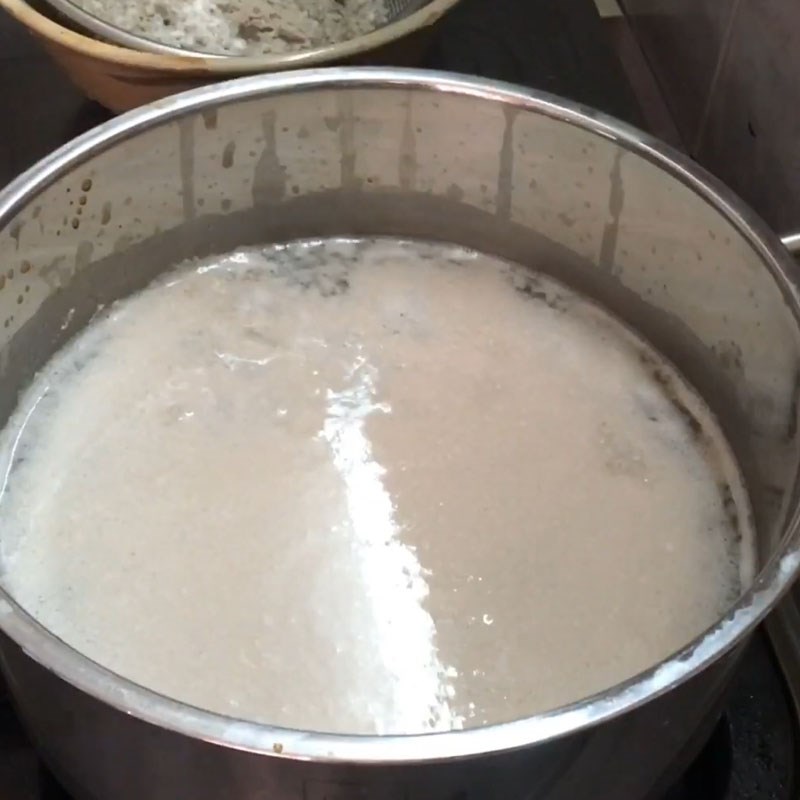
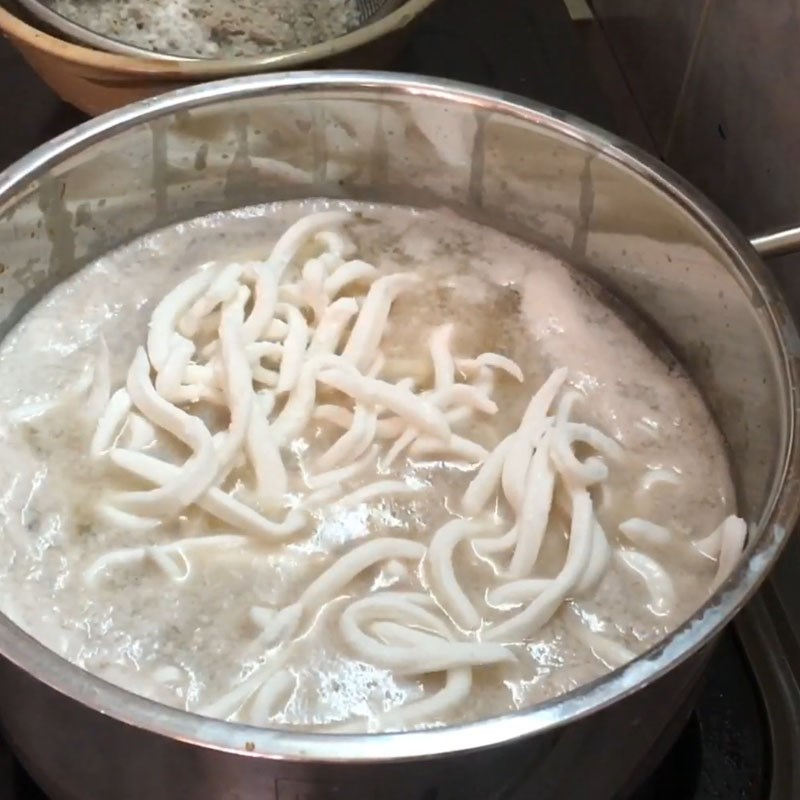
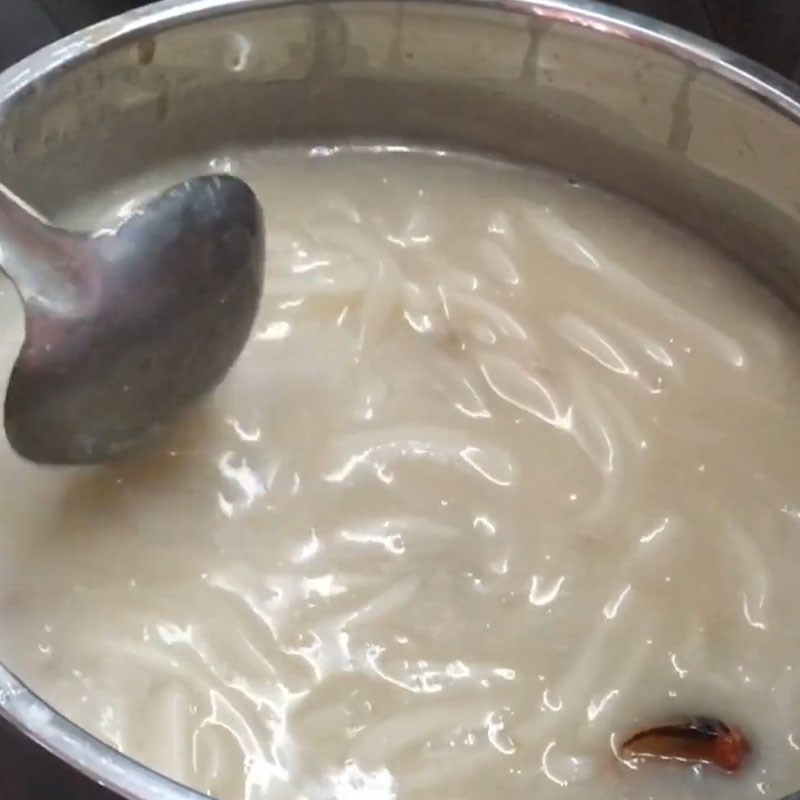
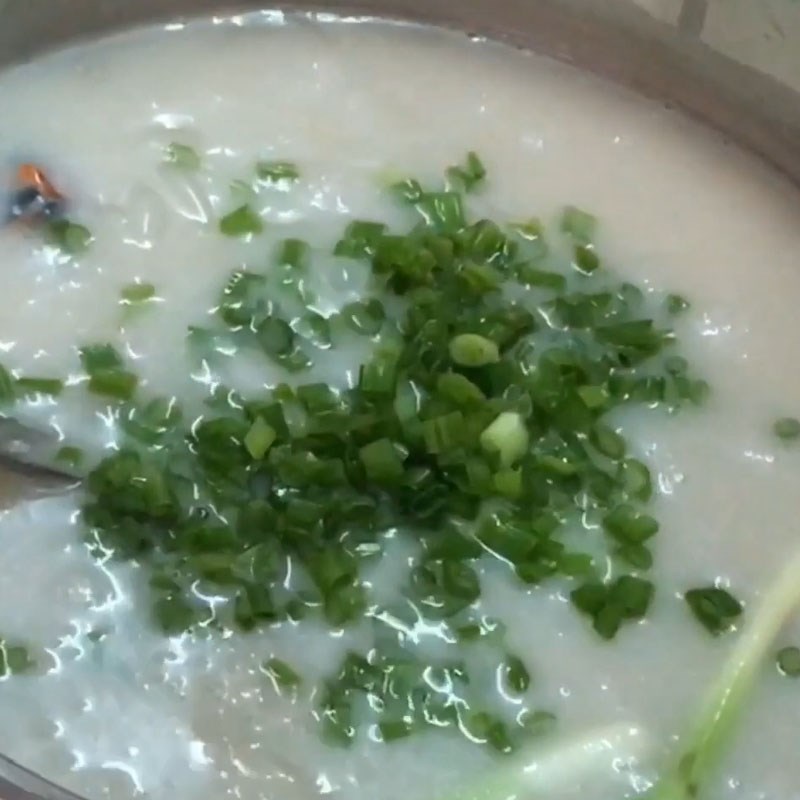
-
Final product
With just a few simple steps, you now have a hot and creamy bowl of crab noodle soup with coconut milk. The broth is sweet and rich from the coconut milk, the noodles are chewy, and the crab algae is soft and sweet, without any fishy taste, making it very appealing.
Get in the kitchen and show off your skills to make this dish for the whole family to enjoy!

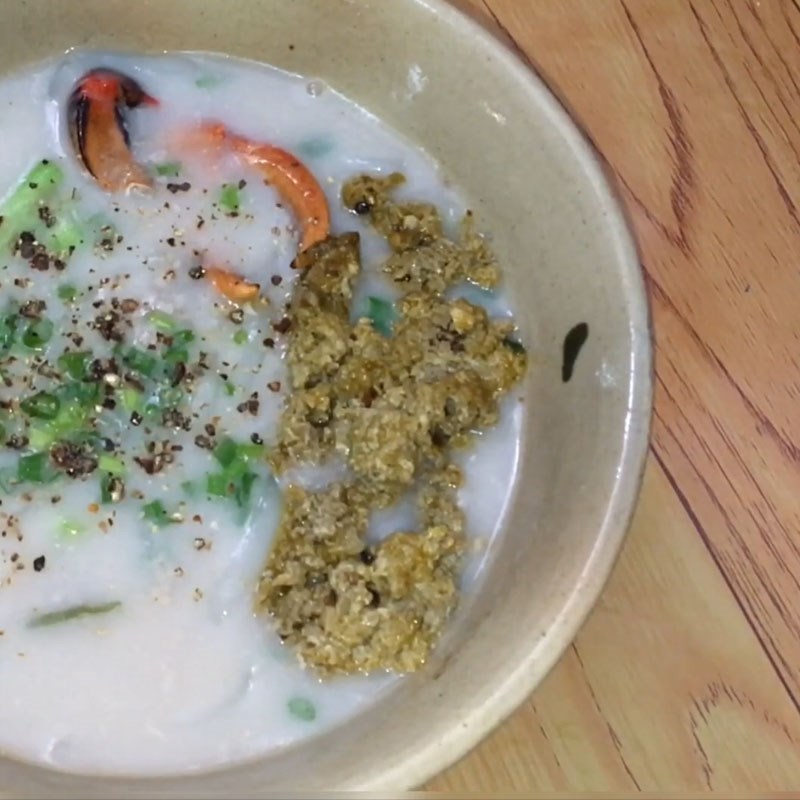
How to choose good coconut milk
- For this dish, you should mainly use coconut milk type 2 (the milk extracted from the second pressing, also known as diluted coconut milk), as this type has a moderate thickness and fat content, making it easy to season when cooking, not too greasy or thick like coconut milk type 1 (extracted from the first pressing).
- You can use pre-packaged or canned coconut milk available at markets, supermarkets, grocery stores,… This product is currently sold at TasteVN, and when purchasing, make sure to check the expiration date and the condition of the can to ensure quality.
- Additionally, you can buy dried coconut meat to extract milk at home, allowing you to easily adjust the quantity according to your preferences following the detailed instructions from TasteVN.
See details: How to make smooth coconut milk at home
How to choose delicious chewy bánh canh noodles
- For this bánh canh dish, you should choose to buy noodles made from rice flour for the best flavor!
- Clean bánh canh noodles without chemicals will have the natural aroma of rice and corn flour. In contrast, chemically treated noodles will have a stronger and less pleasant smell.
- Delicious bánh canh noodles usually have a translucent white color, are soft and elastic, with a certain degree of chewiness and bounce.
- You should not buy bánh canh noodles that have strange colors and odors or show signs of mold.
- It’s best to buy bánh canh at reputable production facilities or at large supermarkets and grocery stores.
- Additionally, to ensure safety and hygiene, you can also make bánh canh noodles right at home.
See details: Simple method to make bánh canh noodles at home
So you can cook right away 2 dishes of crab tapioca noodles with coconut milk that are rich and fragrant, perfect for the whole family to enjoy on the weekend. Wishing you success with TasteVN’s recipe.
*Refer to the recipe and images shared from the YouTube channels: What to Eat Here? and The Peaceful Kitchen Corner
